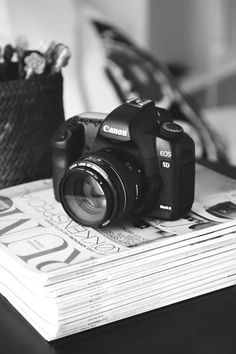The future of photography is code
The landscape of photography is evolving rapidly, and at the forefront of this transformation is the integration of code and computational techniques. As technology advances, the future of photography is increasingly defined by algorithms and artificial intelligence, reshaping how we capture, edit, and share images. Here’s a deep dive into how coding is revolutionizing the art of photography.
## **1. The Rise of Computational Photography**
Computational photography refers to the use of digital processing techniques to enhance or create images. Unlike traditional photography, which relies on physical components like lenses and sensors, computational photography leverages software to manipulate light and improve image quality. This shift allows for capabilities that were previously unimaginable, such as:
- **Image Stacking**: Combining multiple images to create a single photo with improved dynamic range and clarity.
- **Depth Mapping**: Using algorithms to simulate depth of field effects that mimic expensive lenses.
Companies like Google, Apple, and Samsung are heavily investing in this field, pushing the boundaries of what smartphone cameras can achieve without needing larger or more complex hardware [1][2].
## **2. AI-Powered Cameras**
Artificial intelligence is becoming a game-changer in photography. Modern cameras are increasingly equipped with AI capabilities that enhance user experience and image quality. Key features include:
- **Scene Recognition**: Cameras can automatically identify subjects (like landscapes or portraits) and adjust settings accordingly for optimal results.
- **Facial Recognition**: AI can detect faces in a scene, ensuring they remain in focus while blurring backgrounds for a professional look.
These advancements mean that anyone can take stunning photos with just a push of a button, democratizing high-quality photography [1][3].
## **3. Enhanced Post-Processing**
Post-processing has always been an integral part of photography, but coding is making it more efficient than ever. With AI-driven editing tools, photographers can quickly:
- **Remove backgrounds**: Automatically isolate subjects from their backgrounds.
- **Adjust lighting**: Use algorithms to enhance or correct lighting issues in an image.
These tools not only save time but also allow photographers to focus on their creative vision rather than getting bogged down by technical details [5][6].
## **4. The Future of Image Libraries**
As the volume of digital images grows exponentially, managing these assets becomes increasingly challenging. Future image libraries will employ advanced machine learning algorithms to:
- **Automatically tag images**: Using descriptive words based on content recognition, eliminating the need for manual keywording.
- **Facilitate search**: Users will be able to search for images using natural language queries rather than specific tags.
This will streamline workflows for photographers and make it easier to find the right images quickly [1][2].
## **5. The Artistic Implications**
While coding enhances technical aspects of photography, it also raises questions about artistry. As cameras become smarter and more automated, the role of the photographer may shift from technical execution to creative direction. Photographers will need to adapt by focusing on storytelling and emotional impact rather than just technical proficiency [3][4].
## **6. Challenges Ahead**
Despite these advancements, challenges remain. The reliance on algorithms raises concerns about authenticity and creativity in photography. As AI takes over more functions, there’s a risk that images may become homogenized or lack personal touch. Photographers will need to balance technological enhancements with their unique artistic vision [5][6].
## **Conclusion**
The future of photography is undeniably intertwined with code and computational techniques. As technology continues to evolve, photographers must embrace these changes while retaining their creative essence. The integration of AI and software into photography not only enhances technical capabilities but also opens up new avenues for artistic expression. By adapting to these advancements, photographers can continue to capture breathtaking images that resonate with audiences around the world.
Citations:
[1] https://itmunch.com/the-evolution-and-future-of-photography/
[2] https://www.cbc.ca/news/science/computational-photography-iphone-8-iphone-x-camera-levoy-1.4287470
[3] https://smiler.co/blog/industry-trends-and-predictions/
[4] https://www.canon-europe.com/view/blockchain-photography-intellectual-property/
[5] https://www.aiprm.com/education/ai-and-the-future-of-photography/
[6] https://petapixel.com/2023/03/18/7-essential-elements-to-a-good-photo/
[7] https://www.elementdefense.com/blog/how-nasa-takes-pictures
[8] https://www.space.com/photographing-earth-from-iss-nasa-astronauts-explainer


Comments
Post a Comment